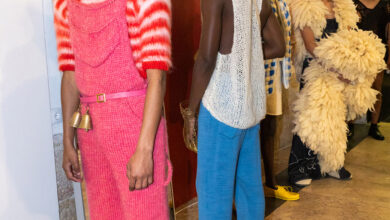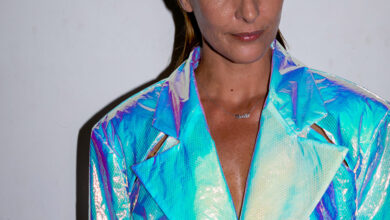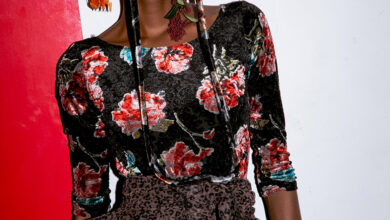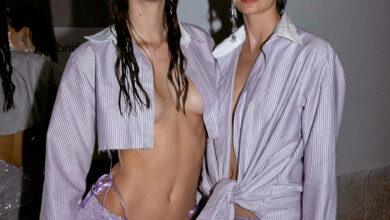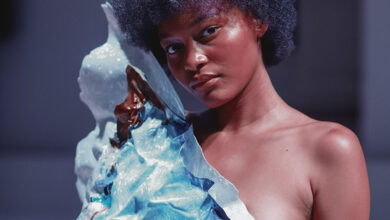ArtFashionZoot reports
FROM CRAFT TO ART: MEET THE ARTFACT COLLECTIVE
The members of the Artefact Collective present to Zoot Magazine the designs they will showcase at London’s Victoria House this week.
Text by Anna Battista
Seeing the nine students from the MA Fashion Artefact course at London College of Fashion putting the final touches to their designs is definitely an experience that awakens the senses. Sight, smell and touch are indeed stimulated by the elegant beauty of the pieces and by the textures and smells of the materials employed to make them from the rubbery consistency of silicone to the smoothness of Perspex and the distinctive smell of traditional English leather, Alexandra Gross, Charlie Goldthorpe, Hanwen Shen, Kat Marks, Lara Torres, Oliver Ruuger, Vesna Pesic, Wei Wang and Yu Lin Xu, the students behind the “Artefact Collective”, will be showcasing their works in an exhibition launching this week at London’s Victoria House (Bloomsbury Square – until 9th February). Zoot sat with them to discover more about their designs and inspirations.
 Alexandra Gross: For my collection, I was reading about chaos theory and the butterfly effect. While looking at these topics, I considered how a change in the initial stages can create larger, unexpected results. I decided to transpose these ideas into an image of distortion or unbalance in leather goods. So through pattern making and structural manipulation, I created variations of bags characterised by slight twists. One of the main ideas in my collection is to move away from commercialism and the consumer frenzy. I wanted to create something well crafted, made following all the traditional leather techniques that make it long lasting and move away from disposable fashion. At the same time, it was important to me to fuse traditional craftsmanship with technologically advanced processes. All the pieces are made with bridle leather, suede lining and are hand-sewn and the hardware elements were based on traditional closures. In one case, I took a case lock, deconstructed it, redesigned it and had brass laser cut, before assembling by hand.
Alexandra Gross: For my collection, I was reading about chaos theory and the butterfly effect. While looking at these topics, I considered how a change in the initial stages can create larger, unexpected results. I decided to transpose these ideas into an image of distortion or unbalance in leather goods. So through pattern making and structural manipulation, I created variations of bags characterised by slight twists. One of the main ideas in my collection is to move away from commercialism and the consumer frenzy. I wanted to create something well crafted, made following all the traditional leather techniques that make it long lasting and move away from disposable fashion. At the same time, it was important to me to fuse traditional craftsmanship with technologically advanced processes. All the pieces are made with bridle leather, suede lining and are hand-sewn and the hardware elements were based on traditional closures. In one case, I took a case lock, deconstructed it, redesigned it and had brass laser cut, before assembling by hand.
 Charlie Goldthorpe: I was inspired by the idea of taking the function and purpose of ordinary objects away. I essentially moved from pieces that were found, collected or donated by different people, including a trunk, a suitcase, an umbrella, a hip flask and a perfume bottle. I found in a scrap bin a locket that was going to be thrown away or melted to make new components and I decided to capture this image in platinum cured silicone, then designed outside it a protective leather case. In the case of the satchel, I found it in a skip and captured in silicone its buckles. I also looked into tattooing and branding the skin in different ways: all my objects bear a number that is relevant to myself – like my date of birth for example – or that are significant to other people, so that they represent an extension of themselves within that object.
Charlie Goldthorpe: I was inspired by the idea of taking the function and purpose of ordinary objects away. I essentially moved from pieces that were found, collected or donated by different people, including a trunk, a suitcase, an umbrella, a hip flask and a perfume bottle. I found in a scrap bin a locket that was going to be thrown away or melted to make new components and I decided to capture this image in platinum cured silicone, then designed outside it a protective leather case. In the case of the satchel, I found it in a skip and captured in silicone its buckles. I also looked into tattooing and branding the skin in different ways: all my objects bear a number that is relevant to myself – like my date of birth for example – or that are significant to other people, so that they represent an extension of themselves within that object.
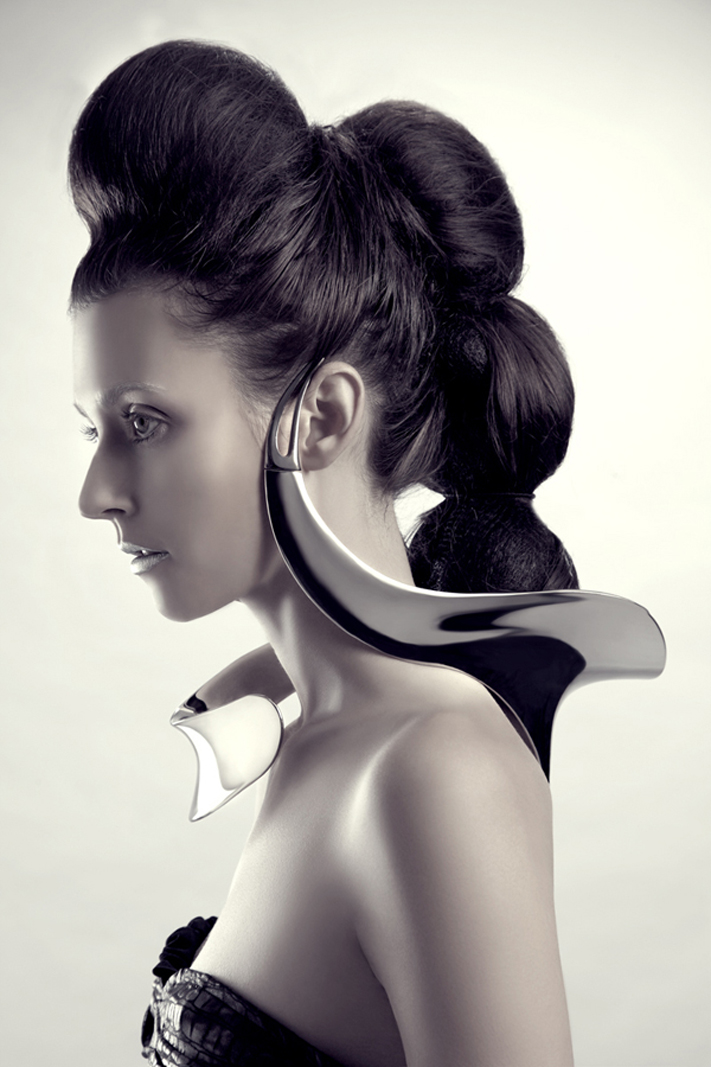 Hanwen Shen: I used to be a jeweller and now I’m focusing on fashion objects. With this project I explored the back area and the erotic power of a woman’s nape. Fashion doesn’t really take into consideration so much the nape of a woman, but, inspired also by the Oriental aesthetic, I’ve done a lot of research about this part of the body. I think the nape of a woman is very sensual and also evokes images of Japanese women wearing the kimono. All the accessories I made are characterised by striking shapes as I want the wearer to feel empowered while wearing them.
Hanwen Shen: I used to be a jeweller and now I’m focusing on fashion objects. With this project I explored the back area and the erotic power of a woman’s nape. Fashion doesn’t really take into consideration so much the nape of a woman, but, inspired also by the Oriental aesthetic, I’ve done a lot of research about this part of the body. I think the nape of a woman is very sensual and also evokes images of Japanese women wearing the kimono. All the accessories I made are characterised by striking shapes as I want the wearer to feel empowered while wearing them.
Hanwen Shen: I used to be a jeweller and now I’m focusing on fashion objects. With this project I explored the back area and the erotic power of a woman’s nape. Fashion doesn’t really take into consideration so much the nape of a woman, but, inspired also by the Oriental aesthetic, I’ve done a lot of research about this part of the body.I’ve done a lot of research about this part of the body.
 Lara Torres: My research is entitled “An impossible wardrobe for the invisible” and it’s about memory and clothing. It was inspired by a project I started in May 2005 that focused on the mechanisms of memory. The video and the object that are part of the installation in the exhibition document the loss of an object and the way the processes of remembering and forgetting work in clothing.
Lara Torres: My research is entitled “An impossible wardrobe for the invisible” and it’s about memory and clothing. It was inspired by a project I started in May 2005 that focused on the mechanisms of memory. The video and the object that are part of the installation in the exhibition document the loss of an object and the way the processes of remembering and forgetting work in clothing.
 Kat Marks: I consider myself an image-maker and a craftswoman. The media I’ve chosen for my project are Perspex and leather and I use these materials to encase the body or mimic the body, building different shapes upon it. With this collection in particular I focused around the chest area, playing with tribal inspirations and referencing the tuxedo as well. The collection is called “the karass”, after the group of different people who, unknowingly, work together to do God’s will in Kurt Vonnegut’s novel Cat’s Cradle. I developed the collection for a specific muse, a woman that I have in mind, and these accessories represent an extension of her, not something that decorates her. I have also conceived the collection as a tool, a prop in the generation of images for photography and film purposes. I have recently worked with SHOWstudio and Nick Knight producing a film for the exhibition that looks at the material object, at the way it transforms a woman and at the audience’s perception of that woman.
Kat Marks: I consider myself an image-maker and a craftswoman. The media I’ve chosen for my project are Perspex and leather and I use these materials to encase the body or mimic the body, building different shapes upon it. With this collection in particular I focused around the chest area, playing with tribal inspirations and referencing the tuxedo as well. The collection is called “the karass”, after the group of different people who, unknowingly, work together to do God’s will in Kurt Vonnegut’s novel Cat’s Cradle. I developed the collection for a specific muse, a woman that I have in mind, and these accessories represent an extension of her, not something that decorates her. I have also conceived the collection as a tool, a prop in the generation of images for photography and film purposes. I have recently worked with SHOWstudio and Nick Knight producing a film for the exhibition that looks at the material object, at the way it transforms a woman and at the audience’s perception of that woman.
 Oliver Ruuger: My starting point was creating a product that does have a strong presence next to the person carrying it. This is why I tried to use valuable materials such as ebony, horsehair and leather. Construction-wise I’m quite interested in combining the traditional with the new, this is why I did everything by hand and by myself apart from the metal-hardware. The leather parts are for example stitched together using saddle-making techniques and the pieces are all designed and drawn out in Cad and then laser cut down to the millimetre. Accuracy is very important, but the manual part is quite big as hundreds of hours go into each object.Accuracy is very important, but the manual part is quite big as hundreds of hours go into each object. Accuracy is very important, but the manual part is quite big as hundreds of hours go into each object.|||||||||||||||||||||||||||||||||||||||||
Oliver Ruuger: My starting point was creating a product that does have a strong presence next to the person carrying it. This is why I tried to use valuable materials such as ebony, horsehair and leather. Construction-wise I’m quite interested in combining the traditional with the new, this is why I did everything by hand and by myself apart from the metal-hardware. The leather parts are for example stitched together using saddle-making techniques and the pieces are all designed and drawn out in Cad and then laser cut down to the millimetre. Accuracy is very important, but the manual part is quite big as hundreds of hours go into each object.Accuracy is very important, but the manual part is quite big as hundreds of hours go into each object. Accuracy is very important, but the manual part is quite big as hundreds of hours go into each object.|||||||||||||||||||||||||||||||||||||||||
 Vesna Pesic: I’ve been a milliner for quite some time, so this is not my first collection, but I would define it a ‘far-from-millinery’ collection, though it still features headpieces. It’s called “Poetry in Pose” and it’s a play on words. I used to write poetry in prose and, as you may know, this practice looks at a stronger emotional effect created using heightened imagery. My pieces are created to provoke feelings and empower the wearer through symbolism and abstract art. Though the pieces look quite sculptural they are very light and made entirely out of leather. I employed different techniques to make my designs, using leather as if it were fabric, draping it, but also as if it were clay to give it a sculptural quality. It takes a long time to do these pieces and a lot of patience as well. What I’m trying to achieve through my collection is prompt people to feel first and think later and not the other way around, because we usually tend to analyse things intellectually, while I want people to feel naturally and I want a natural reaction to my pieces.
Vesna Pesic: I’ve been a milliner for quite some time, so this is not my first collection, but I would define it a ‘far-from-millinery’ collection, though it still features headpieces. It’s called “Poetry in Pose” and it’s a play on words. I used to write poetry in prose and, as you may know, this practice looks at a stronger emotional effect created using heightened imagery. My pieces are created to provoke feelings and empower the wearer through symbolism and abstract art. Though the pieces look quite sculptural they are very light and made entirely out of leather. I employed different techniques to make my designs, using leather as if it were fabric, draping it, but also as if it were clay to give it a sculptural quality. It takes a long time to do these pieces and a lot of patience as well. What I’m trying to achieve through my collection is prompt people to feel first and think later and not the other way around, because we usually tend to analyse things intellectually, while I want people to feel naturally and I want a natural reaction to my pieces.
 Wei Wang: My project is entitled “Reworking the Bag” and it looks at employing traditional Oriental ceramics in accessory production. I have been designing sport accessories for a while now and one of the main things I realised in my work is how limited we are in the choice of materials for bags. Usually we look at the function of a sport and apply it to the product. For my collection I reinvented the evening bag using ceramics, a material that can endow a piece with mystery and elegance. It was a challenge working with ceramics as this is a very unpredictable material, but it was exciting and stimulating.||||||||||||||||||||||||||||||||||||||||||||
Wei Wang: My project is entitled “Reworking the Bag” and it looks at employing traditional Oriental ceramics in accessory production. I have been designing sport accessories for a while now and one of the main things I realised in my work is how limited we are in the choice of materials for bags. Usually we look at the function of a sport and apply it to the product. For my collection I reinvented the evening bag using ceramics, a material that can endow a piece with mystery and elegance. It was a challenge working with ceramics as this is a very unpredictable material, but it was exciting and stimulating.||||||||||||||||||||||||||||||||||||||||||||
Yu Lin Xu: For this project I transferred a classic handbag into a different style. Moving from Picasso’s Cubism I created a classic bag that can be worn in two ways. As you know, you can look at a Cubist painting from different angles and see it in different ways. In this case, though the bag is based on one single and basic shape, it can be transformed by shifting its angles and you can therefore wear it in alternative ways.
Yu Lin Xu: For this project I transferred a classic handbag into a different style. Moving from Picasso’s Cubism I created a classic bag that can be worn in two ways. As you know, you can look at a Cubist painting from different angles and see it in different ways. In this case, though the bag is based on one single and basic shape, it can be transformed by shifting its angles and you can therefore wear it in alternative ways.
Yu Lin Xu: For this project I transferred a classic handbag into a different style. Moving from Picasso’s Cubism I created a classic bag that can be worn in two ways. As you know, you can look at a Cubist painting from different angles and see it in different ways. In this case, though the bag is based on one single and basic shape, it can be transformed by shifting its angles and you can therefore wear it in alternative ways.
Credits for images:
Alexandra Gross: Jon Meade; Charlie Goldthorpe: Tim Medley; Hanwen Shen: Zhiyong Jiao; Kat Marks: Paul Hine, Millinery; Niamh Flanagan; Lara Torres: Direction and concept Lara Torres Co-direction Pedro Fortes, Assistant Yann Gibert, Featuring Joana Areal, Miguel Bonneville, Diogo Bento, Yann Gibert, Eduardo Petersen, Sofia Dias, Vitor Roriz, Andrea Brandão, Liz Vahia, Sofia Pimentão, Teresa Nobre, Lara Torres, Sponsor: Calouste Gulbenkian Foundation; Oliver Ruuger: Michiel Meewis; Vesna Pesic: Ashley Low; Wei Wang: Tom Mulvee










